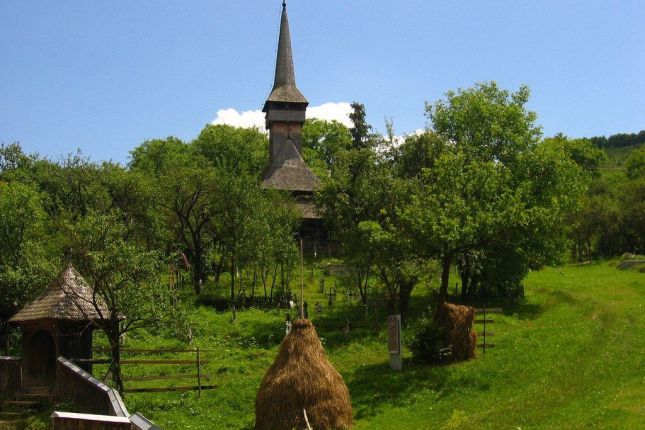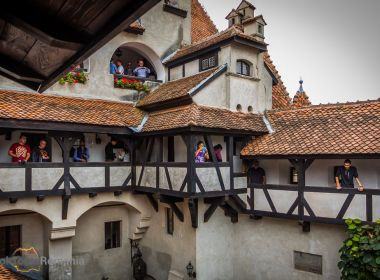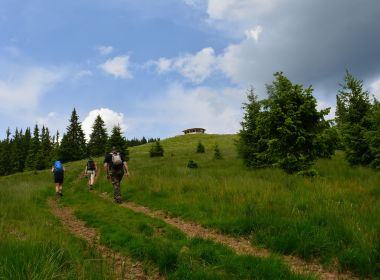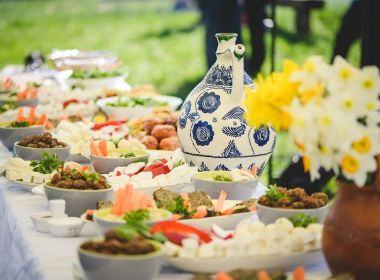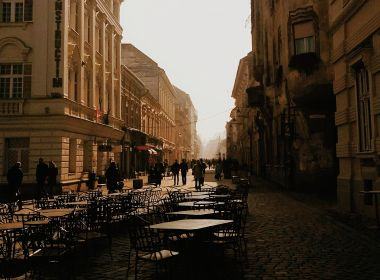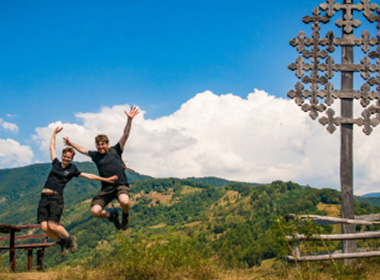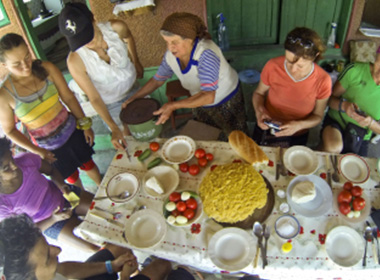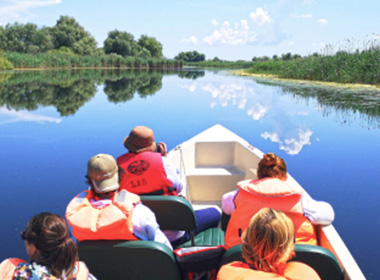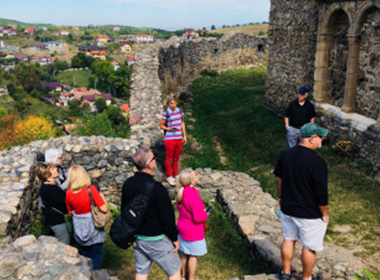Visit Maramures: A Timeless Journey | 9 Things to Do & Places to Visit
The region of Maramures in North-West Romania is famous for many reasons among Romanians - but most foreign travelers don’t know them and miss out on this hidden gem.
In short, it’s the most representative for Romanian culture because our folk traditions and rural way of life are well preserved by proud and hospitable locals.
Even if Transylvania is more popular - Maramures is more authentic and alive.
It’s a land where time slows down. Locals respect ancient traditions passed down from generation to generation and live in a deep communion with nature’s rhythm.
It's a place where wood, transformed into art by gifted artisans, is used in everyday life. Where the folk costumes people proudly wear - and often - bring color and joy to every event.
Where the famous Wooden Churches of Maramures aren't just architectural marvels. They're the beating heart of tradition, echoing the rich heritage of the Romanian village and Orthodox faith.
In this article we will cover:
- the rich tapestry of Maramureș with its rich cultural heritage and cherished traditions
- the many tourist attractions and things to do
- practical advice on how to visit the region
By the end I hope you’ll see why it’s worth including it in your itinerary when you visit Romania. So, let’s get started, shall we?
Table of contents
- Why is Maramures special?
- How to plan a trip to Maramures
- Tourist attractions in Maramures
- 1. Admire the Wooden Churches of Maramures
- 2. Visit Barsana Monastery Complex
- 3. Make quick stops at shrines by the road
- 4. Wood carving: gates, utensils and decorations
- 5. The Merry Cemetery of Săpânța
- 6. Communist Memorial in Sighetu Marmației
- 7. Go on a ride on the Mocănița Steam Train
- 8. Explore traditional villages and natural beauty
- 9. Dive into Romanian food, drinks and hospitality
This video captures everything that makes Maramures special
Why is Maramures special?
Maramureș stands out as the region in Romania where traditions are most faithfully preserved. This was possible thanks to its geographical characteristics: a mix of fertile lands with many valleys, dense woodlands and rolling hills perfect for pasture, all protected by tall mountains.
Accessible only by car, 150 km (or 3h) away from the nearest big city, Cluj-Napoca, and 600 km (9h) away from the capital, Bucharest, Maramures was protected from the historical and political drama of big cities, or the iron grip of the communist regime, which Romania’s history saw plenty of.
Over centuries, tightly-knit communities were formed between villages in the region. Locals were able to keep their ancient traditions and way of life undisturbed until recent decades, thus creating a colorful, loud and friendly scene for ‘unaware’ visitors, especially if they happened to attend local celebrations (almost every Sunday).
Up until the Great Union of 1918 when greater Transylvania joined Romania (at that time Wallachia and Moldova), the Romanian language and Orthodox religion were banned in an attempt to suppress Romanian national identity.
So the modest wooden wooden churches played an important role in preserving local customs, culture and community spirit. That’s why even today every Sunday morning locals wear their best folk costumes, gather the family and head for the church.
Local tip:if you’re planning to visit Maramures try to be there on Sunday; a guide can help you meet locals and even participate in the local gatherings or small celebrations that typically happen after church service
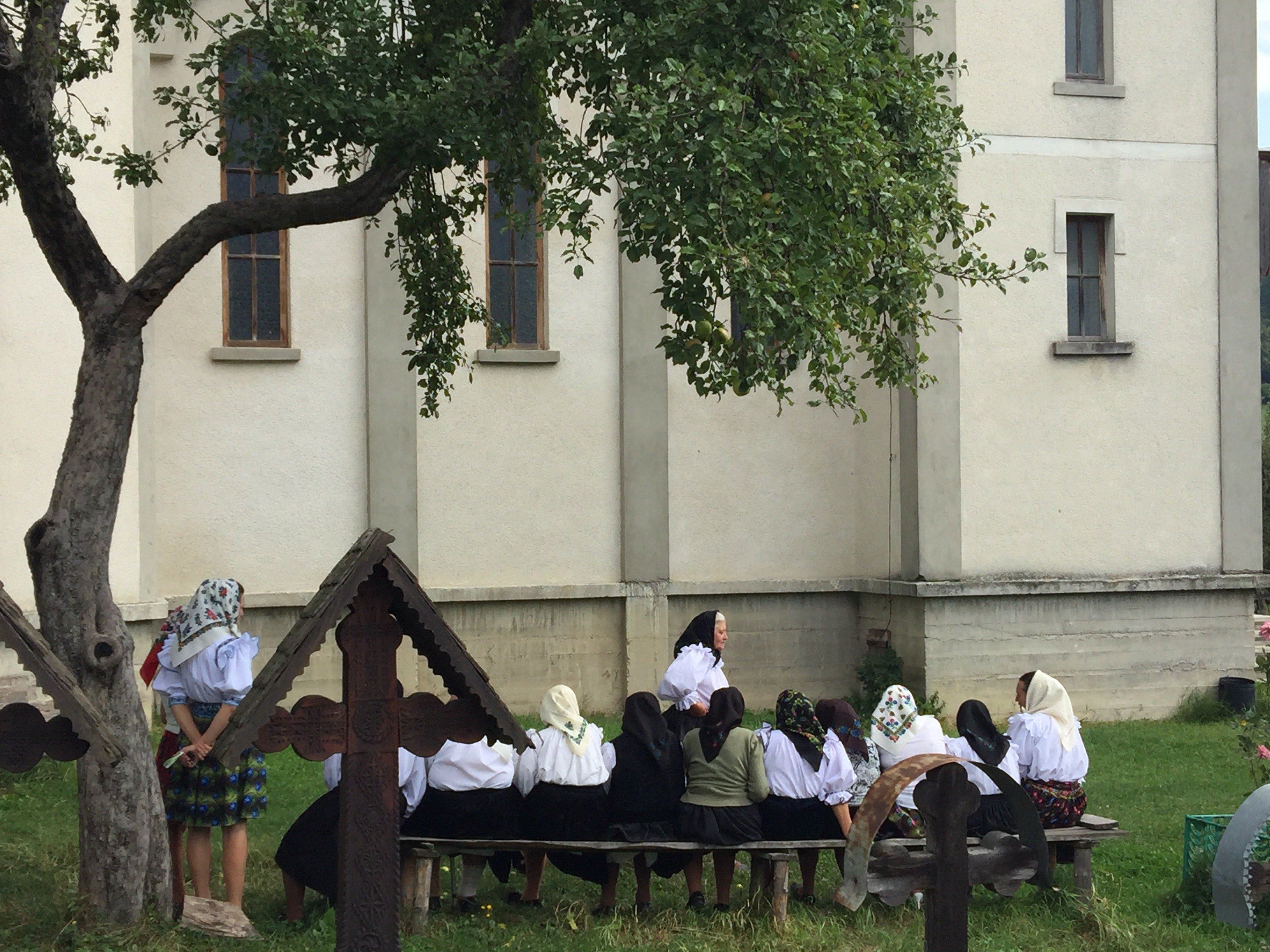
While visiting the region you can spontaneously come across a hora (a folk dance performed in a circle) with folk singers calling locals to join the dance. Don’t worry - it’s easy to learn and everyone is welcomed!
Traditional crafts are still part of everyday life, especially wood carving and weaving of intricate folk costumes and tapestry decorations. You’ll see finely-carved, huge wooden gates at every household. The bigger and more intricate, the more status the family had. With the right connection, you may even visit an artisan’s workshop.
Local traditions and celebrations are at their best during the Romanian Christmas and Easter holidays, the most important in the Orthodox calendar. That’s when locals bring out their best costumes, food and good spirits while fascinating rituals can be observed.
Because it was so far away from Bucharest, Maramureș was largely ignored by politicians in Bucharest. Due to this, the wooden churches so unique for this region weren't destroyed, unlike the churches in other parts of the country targeted by dictator Nicolae Ceausescu for whom religious practice was against socialist values.
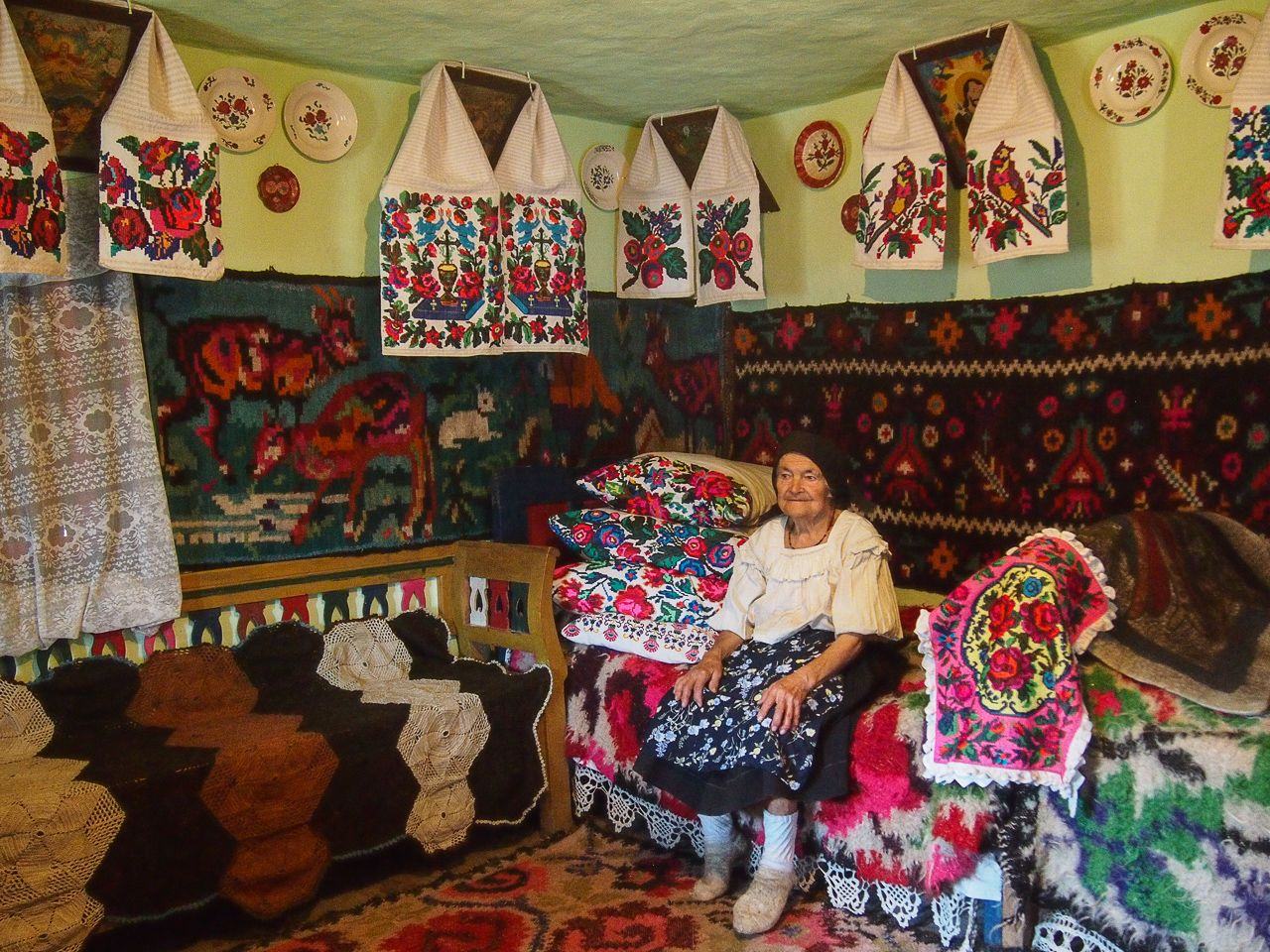
Add to this the locals’ natural hospitality and delicious food with home-grown ingredients, and you already have the premises of a perfect holiday.
Traditions and vernacular architecture are one of the things I like the most when traveling to Maramureș. It is a place where you can witness how life was a few centuries ago before industrialisation, consumerism and the internet.
I believe this is one of the few authentic peasant cultures left in Europe that fortunately continues to thrive in its purest form. And that’s the #1 reason you should consider visiting it.
How to plan a trip to Maramures
Now for some practical matters. As you’ll see, visiting a remote region that is mostly rural and not used to foreign tourists is not exactly easy :)
The first thing to keep in mind is that few locals speak English and English info boards or points are rare outside of major tourist attractions. It's the same as going into the mountains of Morocco to see the berbers, tribes in Africa or the ethnic villages of Vietnam.
- Best time to visit Maramures
Come to Maramureș between April and October, when the weather is warm and nature is in full bloom. To be honest, this is the best time to visit Romania for pretty much anything!
Just know that if you’re visiting Romania in winter snow will make everything special and the Christmas traditions are wonderful - but also more challenging. Tourist sights have shorter schedules, public, open-air celebrations are rare and, of course, you need to be dressed well because it can get very cold with heavy snow.
On Easter and Christmas, the region of Maramures comes alive and there are lots of local traditions to witness. However, these dates are very busy and you should book your stay at least two months in advance.
- How to get to Maramureș
The best way to get to Maramureș is by car. Even if villages well connected by road, there are no local buses traveling between them and the few that do are not convenient as they have irregular schedules. I wouldn't rely on them even if I'm a local!
Keep in mind that Cluj Napoca is 3h away by car, whereas Bucharest is 9h away. So if you land in Romania's capital and want to visit Maramures, I recommend flying to Cluj Napoca, Satu Mare or Baia Mare.
From there, the easiest option is to go on a private tour or rent a car. To learn more about the public transportation in Romania and how to get around efficiently, read our complete guide on this topic.
However, as I've said, locals don’t speak English and tourism in the region is very local. This means public events and artisans’ homes are not advertised in English or online, and tourist signs are mostly in Romanian. So other than visiting landmarks in the region on your own, you won’t see much and miss out on discovering its true charm...
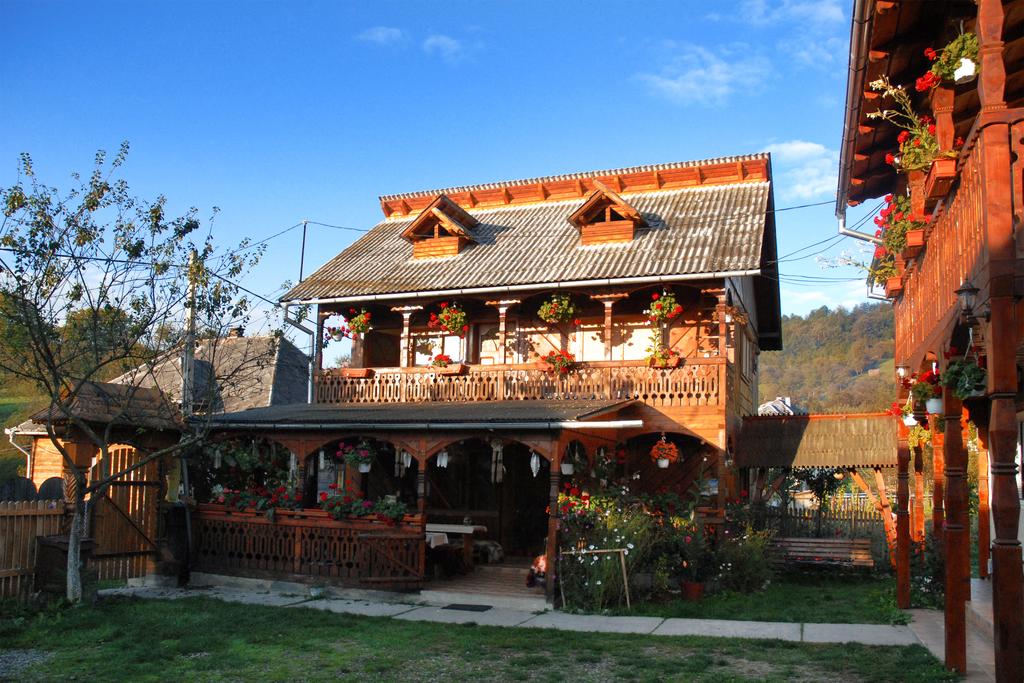
- Where to stay
In Maramures there are no hotels and the most you’ll find are guesthouses, a type of B&B called Pensiune or Casa. You'll find plenty of these on Airbnb or booking.com, but some local Romanian websites could help as well such as lapensiuni.ro or ruralturism.ro.
These rustic accommodations are quite basic so lower your expectations in terms of comfort and appearances.
On the bright side, you’ll be forced to experience rural life and most of these typically have nice courtyards.
Because there are no restaurants in the villages and even if there are, they don’t operate regularly - we recommend booking a guesthouse that serves meals on-site. You’ll have at least a good and hearty breakfast and dinner.
In terms of which village to stay in, I would go for Desesti, Breb, Botiza, Viseul de Sus or Viseul de Jos.
Our guides know several authentic family-owned guesthouses but their value-for-money ratio fluctuates depending on the family's plans and availability for each year. So I don't want to recommend any that would turn out to be a bad choice. Most locals do tourism because of their natural hospitality, not necessarily as their primary business.
***
You will need at least 2 full days to properly visit the region. Main tourist sights are spread across small villages and you need about 1h to travel between them, even if they seem very close on the map. And even then don't expect parking in front of a wooden church.
I know this can be frustrating when you have limited time for your trip, but this is why this region is ideal for slow travel. In Maramureș, you visit the sights, go on village walks and spend time with locals.
This is not the place for fast tourism and those on a rush to see as much as possible will be disappointed because that's not what makes this region so attractive.
To conclude, if you don't have enough time during your holiday in Romania, or if this is your first time in our country and want to see the major sights first, then I would recommend either creating an itinerary with 2-3 days in the region OR leaving Maramures for your next visit to Romania.
Tourist attractions in Maramures
Now let’s get into the juicy stuff. There are several important tourist attractions in the region, as well as some interesting activities and things to do. Some of them are perfect if you’re considering a holiday with the kids in Romania as this is a preferred destination for Romanian families too.
1. Admire the Wooden Churches of Maramures
As these lands were once part of the Hungarian, Habsburg and later Austro-Hungarian Empire, Catholic religion was considered the official one. So the Romanian Orthodox population wasn’t allowed to build stone and brick churches that would survive the test of time.
So local builders, skilled in woodcrafts, switched to a special technique of using wood to build spiritual places of service. So steepled wooden churches with high, slender, and impressive bell towers started appearing in the region and these were quickly decorated to express and preserve local traditions and culture.
The churches are special not only for their architecture marked by high wooden towers and folk decorations, but also for their naive biblical frescoes and representations of traditional rural life.
This is in contrast with the artistic and intricately Painted Churches from the Bucovina region, another set of famous UNESCO landmarks in our country.
Similar with other famous Romanian churches, they became the guardians of Romanian national identity.
These are found in the villages of Bârsana, Desești, Budești, Ieud, Plopiș, Poienile Izei, Rogoz, and Surdești. Most of them are closed during the day but some churches post a telephone number on the main gate and you’ll have to locate the church's key holder to let you in.
At this point, we highlight the importance of having a local guide who speaks Romanian and knows the regular visiting hours, how to find the doorkeeper and to explain what you're seeing.
Briefly, here's what makes the UNESCO wooden churches in Maramureș special - and we also included a few more than are not included on the list but are of significant cultural value:
- Surdești church built in 1721 features a 54-meter-high steeple and wall paintings of Christ’s Passion and the Apocalypse
- Desești church built in 1770 has interior paintings representing Sodom and Gomorrah
- the church in Plopiș impresses with another towering steeple and well-preserved interior paintings of Christ’s Passion
- the church in Poienile Izei has dramatic frescoes of hell, depicting torments inflicted by the devil on sinners
- Ieud church hosts one of the largest collections of icons on glass in Maramureș
- Budești church dating from 1643 features four small turrets around the main steep bell tower as well as 18th-century glass icons with local naive paintings
- the church in Săcălășeni is the oldest in Maramureș dating from 1442
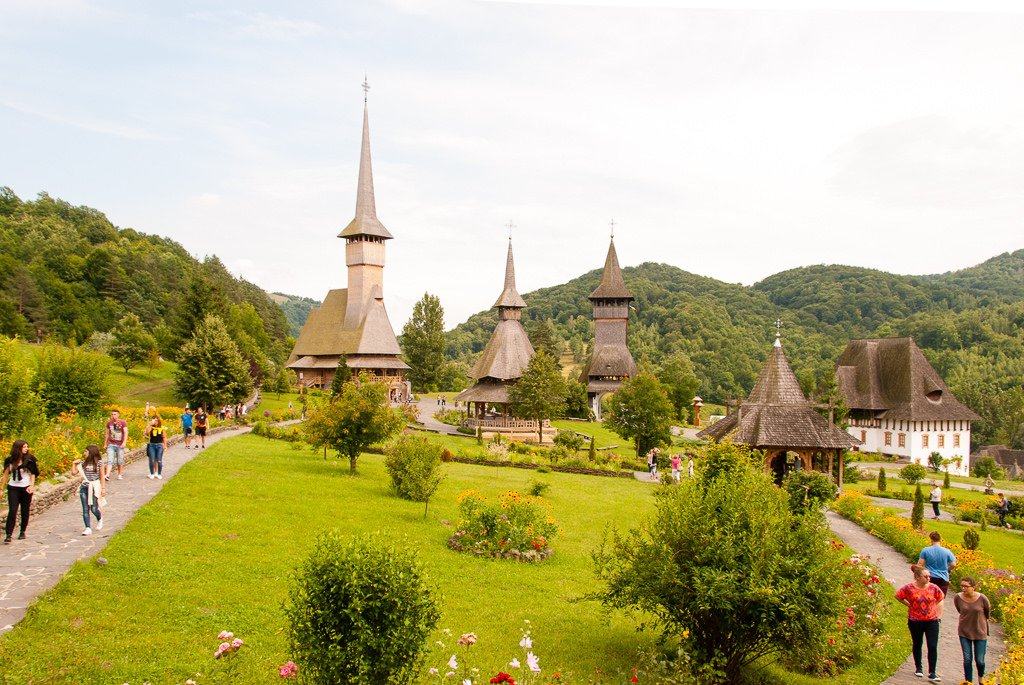
2. Visit Barsana Monastery Complex
Even though it’s a new construction, the Bârsana Monastery Complex includes ten buildings surrounding a wooden church all of them built in 1993 with all the typical markings of Maramures. The buildings have paintings and impressive glass icons made by local artisans.
The complex is a training ground for priests and there are regular ceremonies and events on its grounds - so be respectful.
Its alleys are beautifully decorated and the best time to visit them is during the warm season when all the flowers are in full bloom.
Don't confuse this with the UNESCO-listed Barsana church built in 1720 and located in the same eponymous village.
3. Make quick stops at shrines by the road
As you travel through the region you may notice fascinating structures by the road or up on hills. These are called troiță and are in fact small shrines where locals stop to pray, make blessings or practice gratitude. This is very typical for the Orthodox community in these parts, but less so across Romania.
All of them are made out of wood and are intricately carved, many with biblical motives. So if you see them - stop and get close to admire them. You could also slow down, take a breath and connect with the divine, whatever that means to you, since you'll most likely be faced with beautiful views.
Berbești village has one of the most popular shrines. It's 300 years old and known for its beauty among locals.
4. Wood carving: gates, utensils and decorations
Maramureș features vast hills and rich forests as far as you can see. This is the main reason why wood exploitation is a centuries-old occupation in the region. The mountainous countryside is dotted with wooden cottages and ramshackle farm buildings creating a special atmosphere.
All local farmhouses have wooden gates and, besides the wooden churches, this is another unique architectural feature of the Maramureș region.
Originally, the wood gates were built to protect households from evil spirits. They represented a symbolic barrier between the safe interior (protected by a natural element) and the unknown outside world. Among the common ornamental motifs on these gates you'll find the tree of life, snakes, birds as well as human faces protecting from spirits.
However, in time, the wooden gates also became a sign of social status. The bigger and more intricate a gate is, the wealthier the inhabitants are. You’ll find elaborately crafted - and huge - gates in the villages of Desești, Vadu Izei, Mara, Sârbi, and Bârsana.
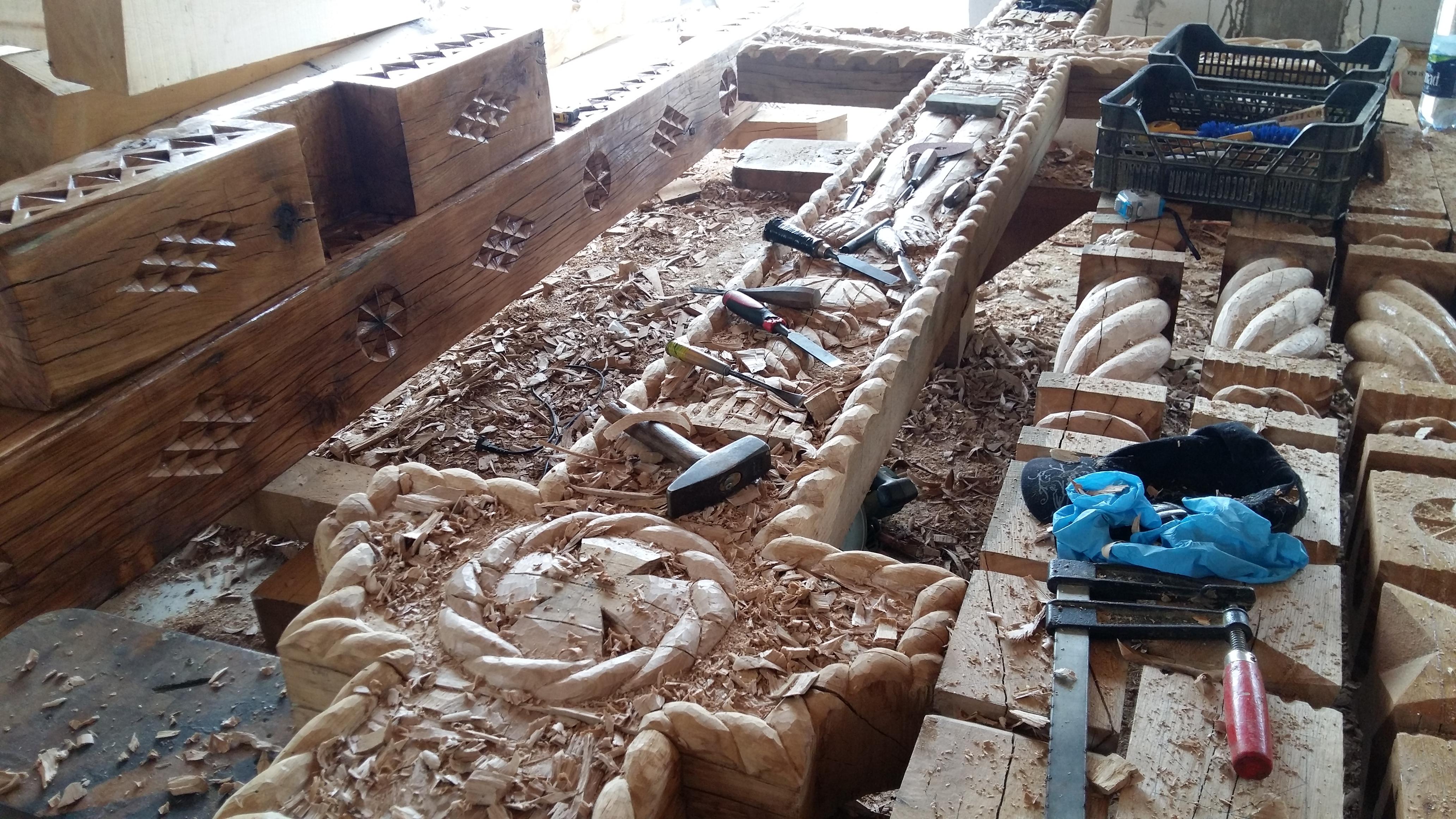
Wood carvers learned their craft and techniques from generation to generation, but sadly the number of artisans has been steadily declining in recent years as younger generations take up other 'occupations.' However, there are still local workshops where artisans are happy to welcome visitors but most are not signposted or advertised.
One of our guides, a native of the region, can take you on such visits so you can see them in action. You may find one of the best Romanian souvenirs here - useful too - such as wooden utensils, cookware, homeware or decorations with traditional motifs.
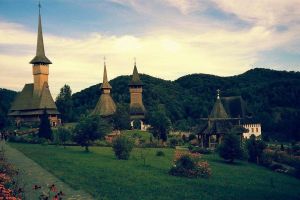
2 or 3 Days in Maramures: Wooden Churches, Traditions & Village Life
Start from: Cluj-Napoca
You’ll be amazed at how creative these craftsmen are and what you can find there. Moreover, it's always a good idea to support small businesses and help the local community keep ancient crafts alive.
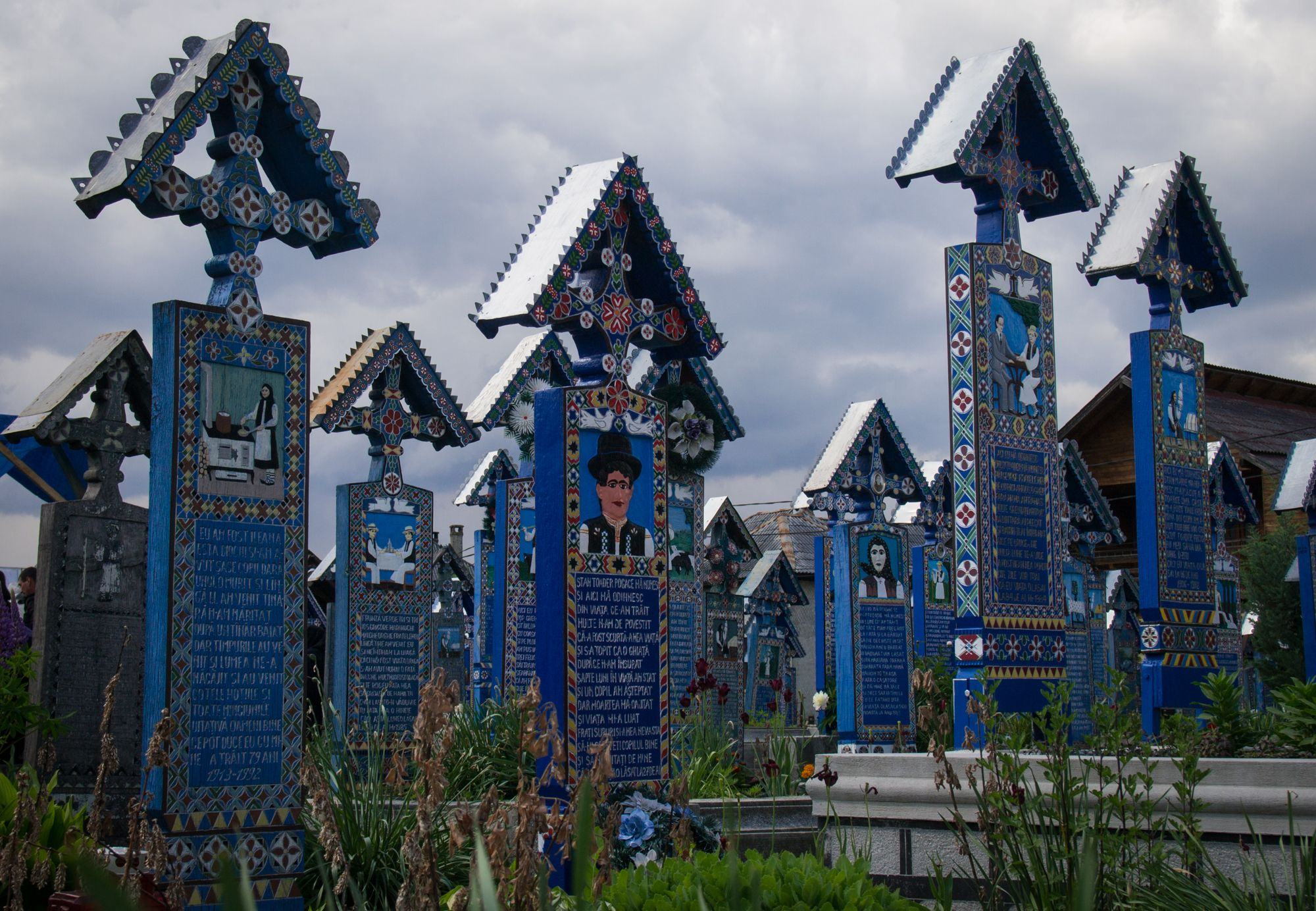
5. The Merry Cemetery of Săpânța
The Dacians (Romanians’ ancestors) believed death was a happy event. Dacian tribes settled here around 1000 BC and they were never conquered by the Romans because of the wild mountains protecting the Maramureș region. This is why some Dacian beliefs and rituals have survived and been adapted over time.
Stan Ioan Pătraș (a wood sculptor) continued this ancestral tradition and brought it to a state of unique art. He created the first ‘happy’ crosses in 1935. The crosses marked the graves in the old church cemetery in Săpânța village and, on each cross, he inscribed a witty epitaph to the deceased.
These included humorous narratives from the dead’s life, illustrating a wealth of traditional occupations. For example, typical scenes include shepherds with their sheep, women cooking or baking bread, weavers working at their looms, etc. Ioan Pătraș even carved and painted his own cross, which can be seen in the cemetery.
The Merry Cemetery looks like a colorful forest of painted wooden grave markers. The crosses in the cemetery are all unique and original.
While a visit here is one of the most unique things to do in Romania - keep in mind that this is not your typical tourist sight. Visitors often forget they’re in a cemetery while squeezing between tombstones to take pictures and selfies, and become disrespectful. Don't be one of them.
6. Communist Memorial in Sighetu Marmației
The sleepy town of Sighetu Marmatiei is Romania’s most northern town, featuring a rural charm and a central square edged by churches of all denominations.
You’ll be surprised to discover this small town has a rich history and a multiethnic character. I love walking its quaint streets because it’s so unexpected with all its various monuments and landmarks.
But despite the calm atmosphere of today, there's a grim legacy hanging in the air. When the Romanian communist regime came to power in 1947, this is where one of the regime's most brutal prisons was established.
Politicians, intellectuals, priests and anyone who opposed the new political leadership were imprisoned here, far away from the capital Bucharest. About 180 major Romanian figures were held here between 1948 and 1952, out of which 51 died due to the harsh conditions.
After the fall of the communist regime, the prison was refurbished and became the Communist Memorial in Sighetu Marmației to commemorate the suffering and the memory of those lost here. This is one of the best Romanian museums to visit if you want to understand what life was like during those times.
Sighet was also an important Jewish settlement until 1944 when many Jews were sent to Auschwitz. Elie Wiesel was a famous Romanian writer of Jewish origin who won the Nobel Peace Prize in 1986.
You can visit his memorial house in Sighetu Marmatiei which traces the writer’s life and work as well as the history of Jews in Maramureș. There’s also a Jewish cemetery and a Sephardic synagogue in town.
7. Go on a ride on the Mocănița Steam Train
Near Vișeul de Sus Vaser Valley is one of the wildest in Maramureș. The town’s main road inevitably leads towards the train station at the edge of the forest where you can embark on a genuine adventure into the wild on the steam train called Mocănița.
It started service in 1932 and is one of Europe’s last steam-powered forest train still in service. It travels at a speed of 30-40 km/h about 22 kilometers on a 12-gauge track, the original ones meant for 'slim' trains, winding through forested crags difficult to access otherwise.
It was originally used to transport logs from the wood exploitation in the hills but now it will take you on a wonderful journey through the picturesque Vaser Valley, making several stops in picturesque areas . Kids love it!
Keep in mind that the train tickets are in high demand and you need to book in advance. Check the official website for more info.
I remember the journey I took with my father on the Mocănița. On the return trip, the train stopped for one hour in the middle of the wild and we could admire the mountainous scenery until the engine was refueled again. I told about how you’ll travel back in time while visiting Maramureș!
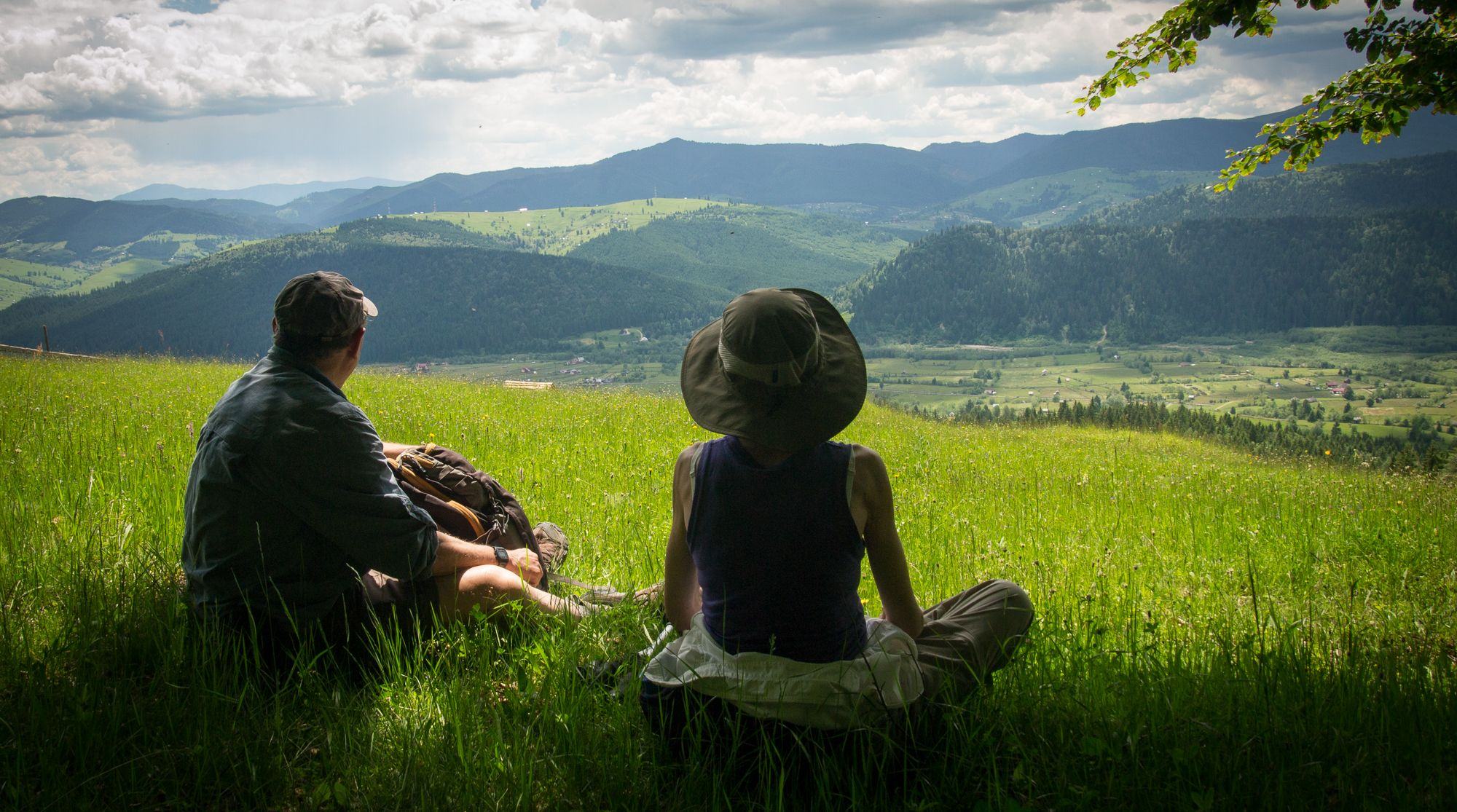
8. Explore traditional villages and natural beauty
Rolling hills and wildflowers are the typical scenery you’ll see while traveling from one village to another. Countryside roads and hundreds of other footpaths link the most hidden hamlets in Maramureș.
After hours of traveling, you can reach remote settlements in the less expected places. It’s like a gift that you keep opening and there’s always a small jewel to discover.
The isolated Iza Valley sends you back in time with its rustic homestays. Breb is maybe the most authentic folk village in Maramureș as here you can immerse traditional lifestyle at its best.
The village has ancient wooden houses and a 16th-century old wooden church. Many craftsmen live here, such as the woodcarver Patru Pop.
Botiza is another traditional village, with authentic homestays and inhabitants flocking to the church on Sunday mornings. Ieud is packed with local wood houses and of course, the unmissable wooden church.
But let’s not forget the natural beauty too! Hiking in the Rodnei Mountains offers multiple options. You can summit Mount Pietrosul Rodnei (2,305m – the highest in the region) from Borșa mountain resort and then backtrack. Or you can continue along the rooster crest of the mountain range.
Trekking the Rodnei Ridge is one of the most challenging experiences in the Carpathian Mountains. You’ll need camping gear and supplies as there’s no place to stay in this wilderness. A good physical condition and hiking experience for this multi-day trek is required too, unless you go with one of our hiking guides who can take care of everything.
If you follow the ridge marked with a red-and-white stripe, you will have expansive views, sleep by glacial lakes, and under the starry sky. But if the full trail is too much for you, then a day trip to the Horses’ Waterfall (90 meters high!) close to Borsa is a good option.
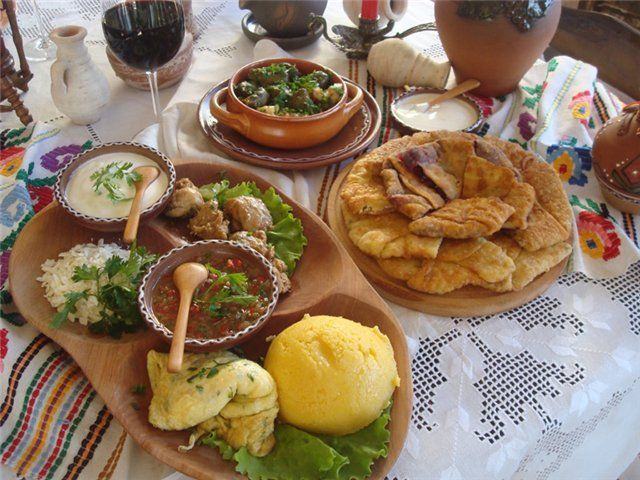
9. Dive into Romanian food, drinks and hospitality
We talked a lot about architecture, pristine nature, and traditional customs. But let’s not forget the delicious and hearty Romanian food Maramureș is so famous for.
Small-scale agriculture and food production is still the main occupation for many locals and selling their produce at food markets or by the side of the street is their main source of income. So, naturally, they have delicious home-grown vegetables and fruits and a variety of jams, pickles, honey and more.
And when these are cooked in traditional - yet unpretentious - meals such as soups (ciorbă) slow cooked stews (tochitura) or the classics sarmale - the taste will be memorable. Many Romanians swear by the delicious taste of these in comparison to the same ones in big cities.
Being a mountainous region with long-standing traditions for raising cattle and sheep, regional specialties and animal products include various assortments of cheese as well as cured meats – don’t miss the Romanian smoked bacon (slănină) with homemade bread, salt, and onion. Most dishes are hearty and reflective of Romania's agrarian roots.
Last but not least, don’t forget to taste local spirit called horincă (between 52% and 62% alcohol). Horinca is a fruit distillate specific to the Maramureș and Oaș regions. In other regions of Romania you’ll find its ‘weaker’ cousin țuică.
Horinca is obtained from a specific selection of ripe plums, double distilled in copper alembic stills, and aged in an oak cask. On our tours you can see the process in action and even participate in a horinca tasting - if you dare!
***
So, now you have all the basics about Maramureș. If you want to research the region more in-depth, visit the official website of Maramureș so you can start planning your trip and make sure you add as many important sights as possible to your list.
Also, let us know if there’s anything we can do to help make your trip to Maramureș unforgettable.
Your Romanian Friend,
Iuliana
Places to visit
Related tours
-

2-day Best of Maramures Tour
Start from: Cluj-Napoca
-
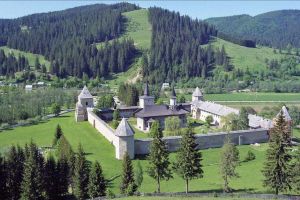
Complete tour of Maramures & Bucovina
Start from: Cluj-Napoca
-
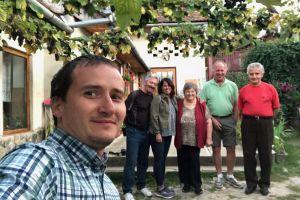
10-Day Best of Romania Group Tour
Start from: Bucharest
4 times a year we prepare a newsletter with local stories, places and our special insights about Romanian culture and local life that will inspire you to visit our country and have an authentic local experience. Would you like to get it?
